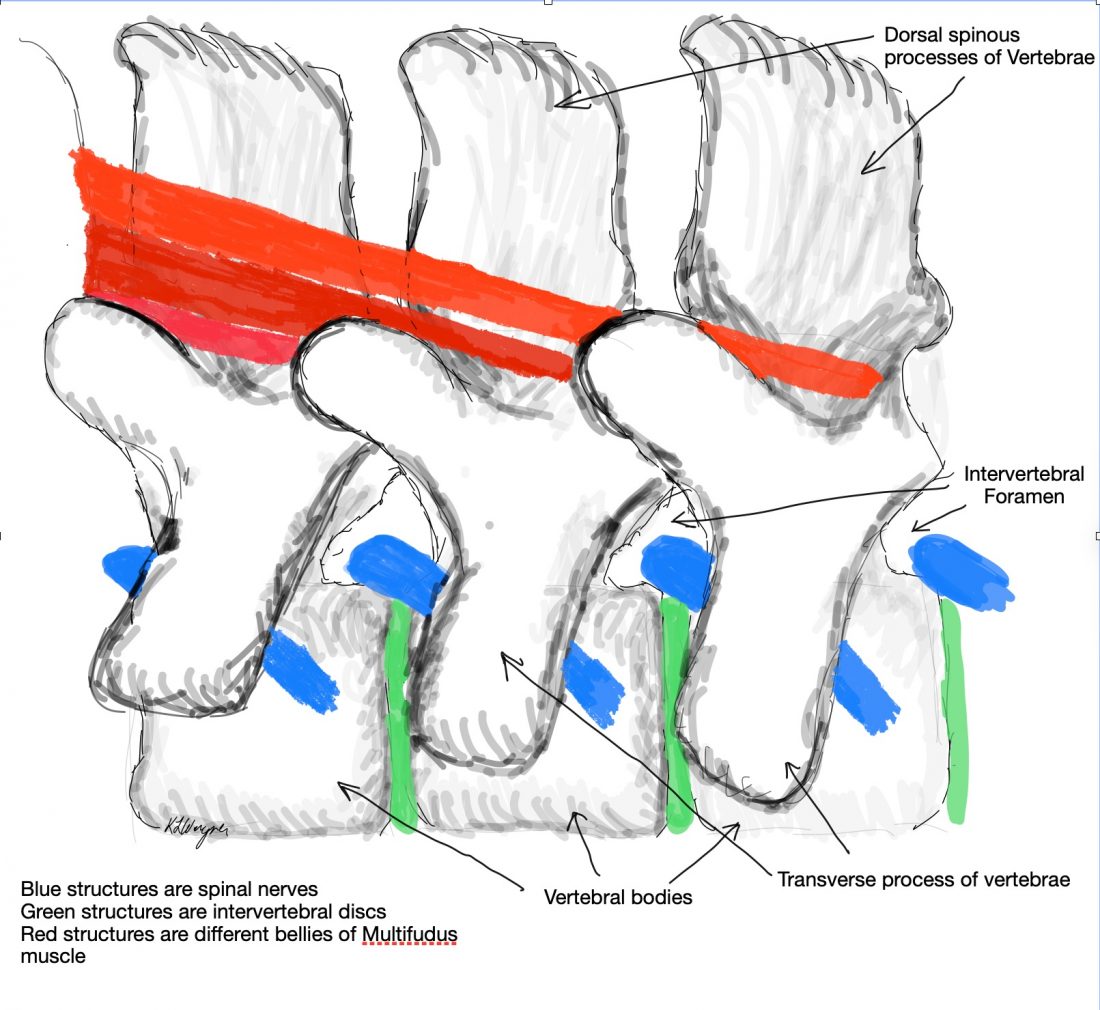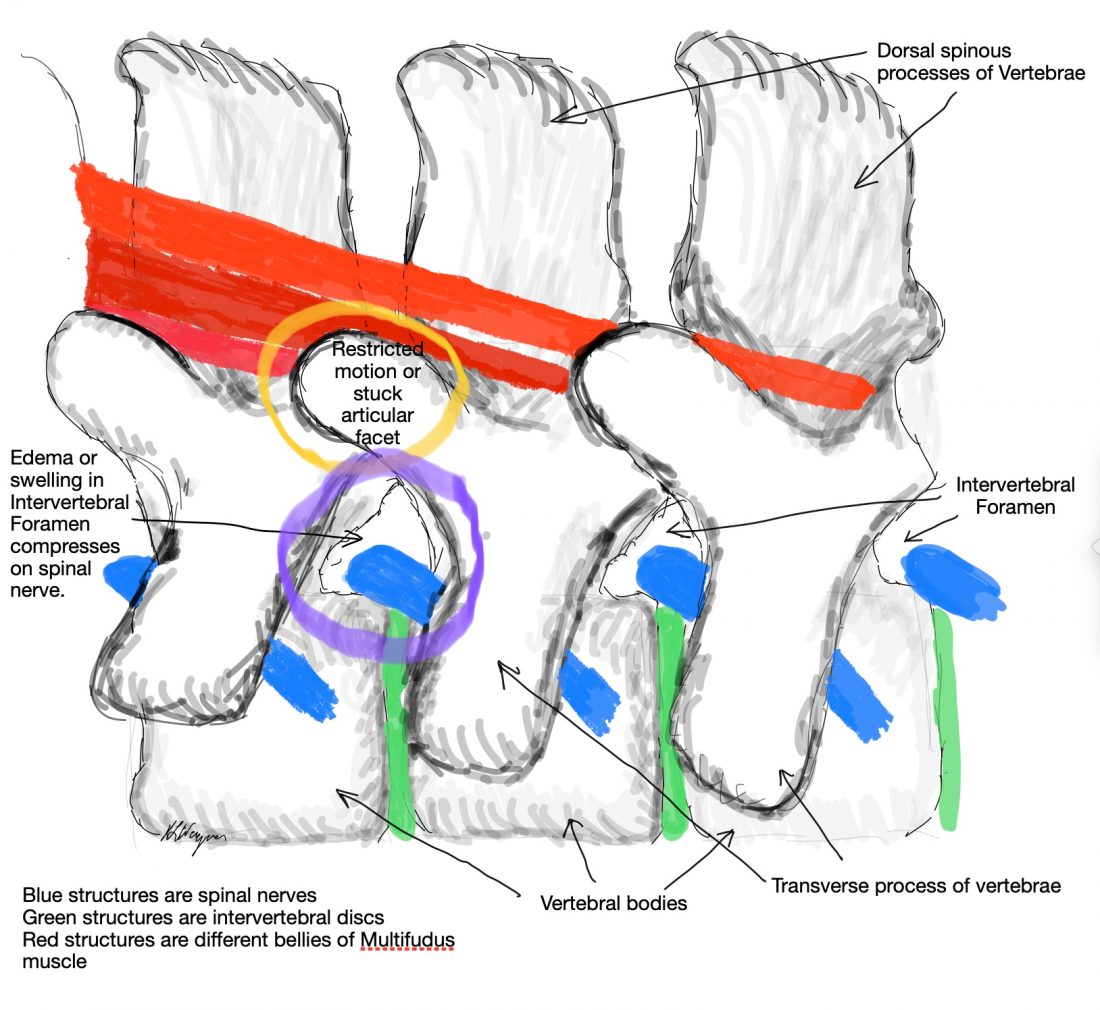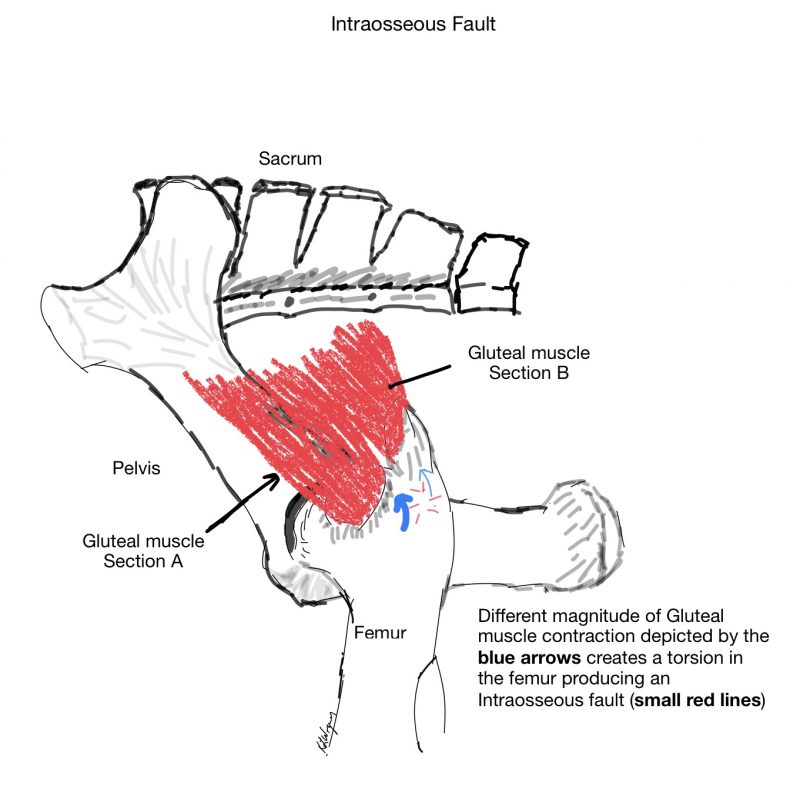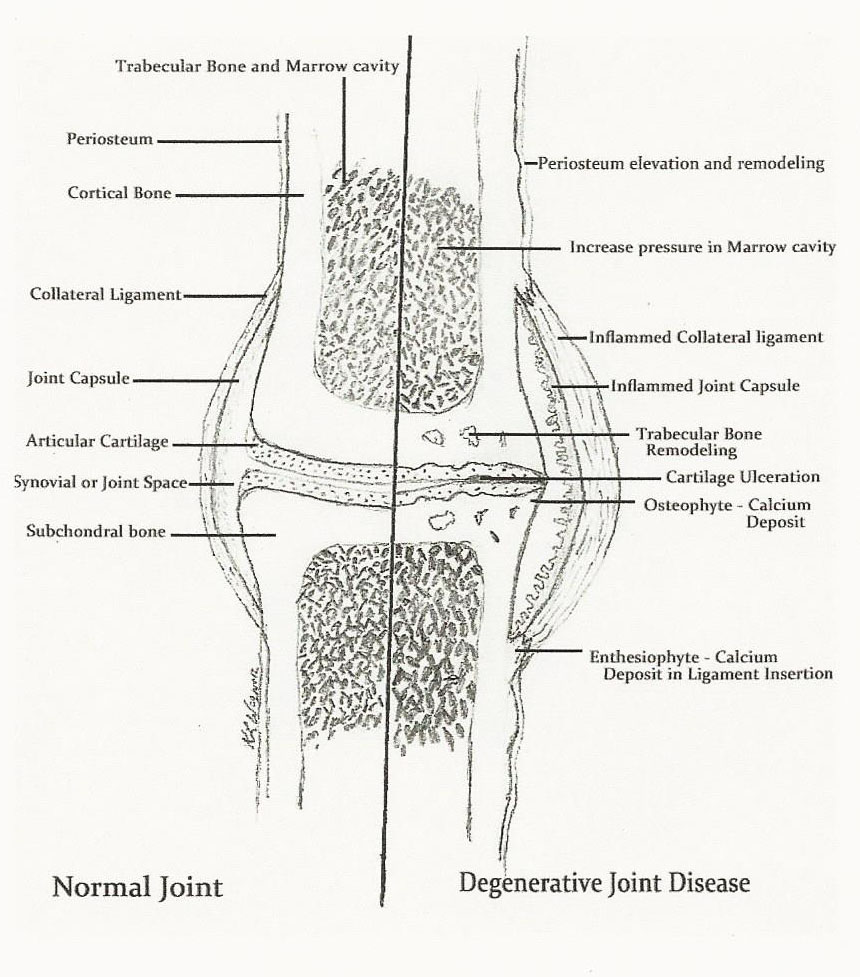Most practitioners who preform chiropractic adjustments are using basic chiropractic techniques or manipulations. These beneficial treatments improve joint mobility and nerve function. Unfortunately these benefits can be short lived. Basic chiropractors use a broad base approach by testing for motion in every joint to find restricted moving joints to adjust. The downfall to this process is not correcting the underlying issues that caused the restricted joint motion. Using Advanced Chiropractic techniques along with Applied Kinesiology, the underlying problems causing the restricted joint motion is resolved allowing for proper joint motion to remain for a longer period of time.
 To understand these concepts, we need to discuss a little anatomy and chiropractic philosophy and principles. We all appreciate the nervous system is the controlling system of animals. The brain, spinal cord and peripheral nerves control and coordinate the body functions so the horse can survive. Environmental imputes influence the horse’s response to maintain homeostatic balance and survival. The most significant environmental influence is gravity or motion resulting from gravitational pull. Beside biomechanical movement of gait, gravity influence all physiological functions, for instance blood flow, breathing and intestinal movement to name a few.
To understand these concepts, we need to discuss a little anatomy and chiropractic philosophy and principles. We all appreciate the nervous system is the controlling system of animals. The brain, spinal cord and peripheral nerves control and coordinate the body functions so the horse can survive. Environmental imputes influence the horse’s response to maintain homeostatic balance and survival. The most significant environmental influence is gravity or motion resulting from gravitational pull. Beside biomechanical movement of gait, gravity influence all physiological functions, for instance blood flow, breathing and intestinal movement to name a few.
The nervous system coordinates the environmental imputes to produce the desired output for function and survival. All of the nerves bringing the environmental stimuli into the spinal canal will influence the magnitude of nervous output. Therefore, if the nervous impute is restricted the nervous output will be changed. Consequently, organ function will be decreased by the restricted nervous output. As the nerves enter the spinal column, they transverse a bony tunnel between two vertebrae. If the vertebrae do not have the proper motion or movement is restricted the tunnel fills with edema or water. This edema takes up space within the bony tunnel restricting the nerve impute and output function of the spinal cord.
 In Basic Chiropractic, the practitioner tests the movement of the vertebrae. If the motion of the joints between the vertebrae is reduced than a chiropractic manipulation is performed to improve the motion of the restricted joint. This improved motion of the vertebrae causes the edema to be driven out of the bony tunnel resulting in improved nerve function. This is where the Basic Chiropractor ends their treatment after finding and correcting all of the restricted movement joints. In chiropractic terms these restricted moving joints are referred to as subluxations.
In Basic Chiropractic, the practitioner tests the movement of the vertebrae. If the motion of the joints between the vertebrae is reduced than a chiropractic manipulation is performed to improve the motion of the restricted joint. This improved motion of the vertebrae causes the edema to be driven out of the bony tunnel resulting in improved nerve function. This is where the Basic Chiropractor ends their treatment after finding and correcting all of the restricted movement joints. In chiropractic terms these restricted moving joints are referred to as subluxations.
If we go deeper into the biomechanical motion problem and ask the question “Why is that?” What caused the restriction of the vertebrae to begin with? At this point we go beyond Basic Chiropractic. The importance of this understanding is if we can correct the root cause of restricted motion we can stop or extend the time before the restricted motion returns. Consequently, if we can correct this underlying cause the need for chiropractic treatments are reduced.
We will try to explain this concept and introduce a few more philosophies. Motion is required for the horse’s and our primary goal of survival. One of the major limiting factors of motion is pain or the subconscious perception that the motion will create pain. Consequently, if it hurts or is going to hurt, we or the horse change or restrict their motion or biomechanical movement so the movement does not hurt. I relate this to the analogy, if you stub your toe. You change the way you walk or biomechanical motion of your walk so you don’t perceive pain in your toe. But if you reach down and grab that toe it is painful. So your body has adapted its biomechanical gait or motion so you can move without the perception of pain.
 Another component of the biomechanical movement picture are Central Pattern Generators (CPG’s). A CPG is a basic hard wiring in the central nervous system. Once initiated, the CPG signals a set pattern of nerve impulses for a repeated rhythmic movement of specific muscles to produce movement or a gait. For instance, a trot is a CPG function. Restricted vertebral joint movement or intraosseous faults can inhibit CPG function and create a CPG dysfunction or deficit. An intraosseous fault is an electrical charge change on the surface of the bone which illicit a pain response. Each CPG has an indicator muscle that becomes weak when a dysfunction occurs with the CPG. The weakness of the muscle is a result of decrease nerve impulse to the indicator muscle. Once the CPG dysfunction is corrected and the nerve impulse is restored the indicator muscle is no longer weak.
Another component of the biomechanical movement picture are Central Pattern Generators (CPG’s). A CPG is a basic hard wiring in the central nervous system. Once initiated, the CPG signals a set pattern of nerve impulses for a repeated rhythmic movement of specific muscles to produce movement or a gait. For instance, a trot is a CPG function. Restricted vertebral joint movement or intraosseous faults can inhibit CPG function and create a CPG dysfunction or deficit. An intraosseous fault is an electrical charge change on the surface of the bone which illicit a pain response. Each CPG has an indicator muscle that becomes weak when a dysfunction occurs with the CPG. The weakness of the muscle is a result of decrease nerve impulse to the indicator muscle. Once the CPG dysfunction is corrected and the nerve impulse is restored the indicator muscle is no longer weak.
A compounding effect in regards to the athletic soundness of the horse results from the CPG deficit. Muscles provide 80% of stability of all joints in the horse. Consequently, if an indicator muscle is weak any joint it stabilizes now has increase motion, laxity or a vibration in the joint. This increase joint motion causes micro-trauma to the joint. Micro-trauma is the number one cause of arthritis and degenerative joint disease. The joint goes through a process of inflammatory changes to try to reduce the vibration and secure the joint. Therefore, correcting the CPG deficits stabilizes the joints of the leg, reducing the risk of arthritic changes.

As a recap, gravity and motion are the number one environmental stimulus that the horse uses to maintain a healthy life. As the motion in the vertebral joints diminish, nerve function is compromised resulting in decreased body functions. Joint motion is affected by pain or the perception of pain. Central Pattern Generator deficits can reduce joint motion and illicit pain responses. Compounding the athletic biomechanical function of the horse, the CPG’s weak indicator muscle allows joint micro-trauma resulting in arthritis. In regards to chiropractic care, Basic Chiropractic care only addresses the reduced motion of the joints with an adjustment, not the causes of the reduced motion. This reduced joint motion returns in a few days since the causes of pain and Central Pattern Generator Dysfunction are not corrected. Advanced Chiropractic with Applied Kinesiology care eliminates the pain induced and CPG dysfunction induced restricted joint motion while benefiting the integrity of the leg joints.
